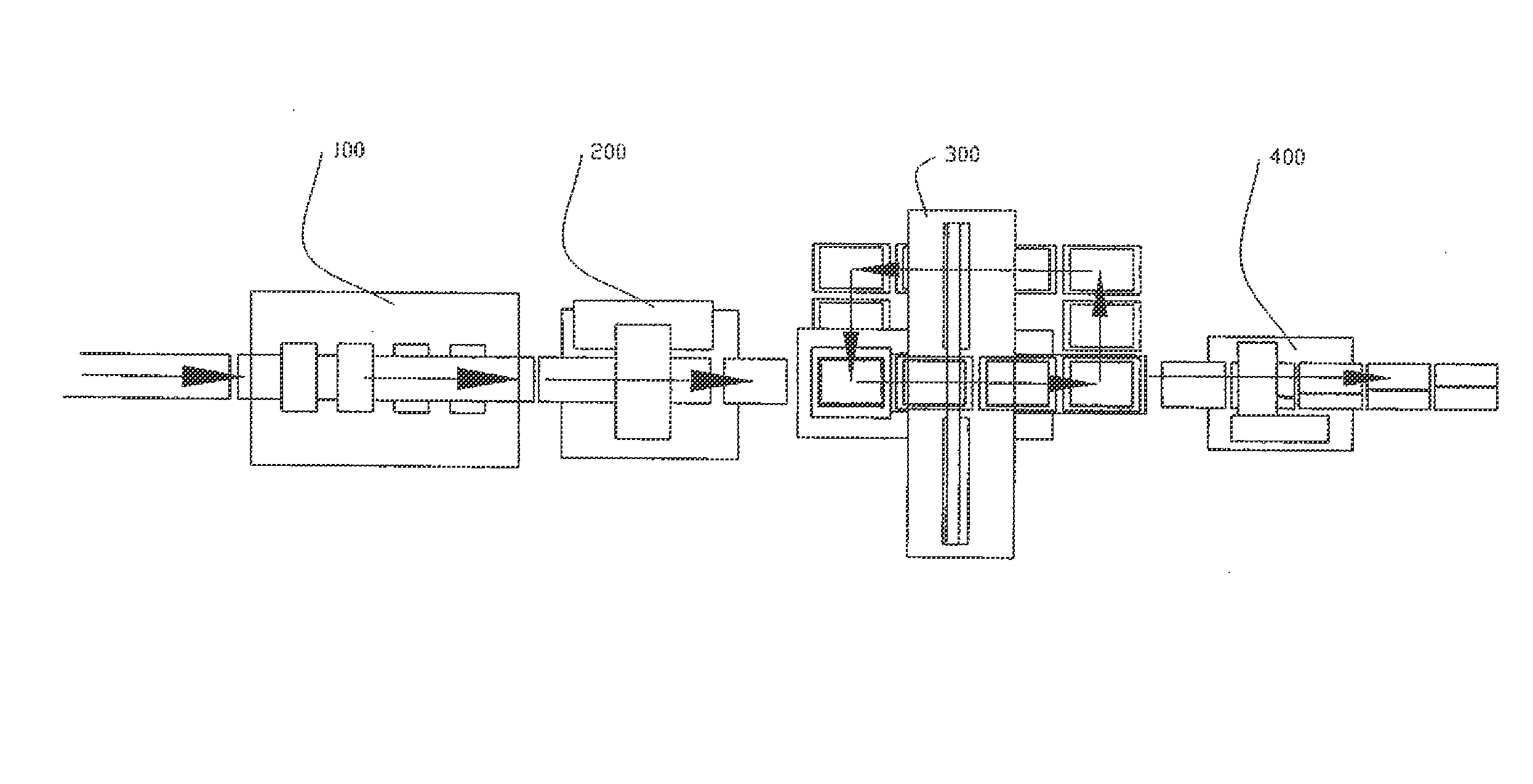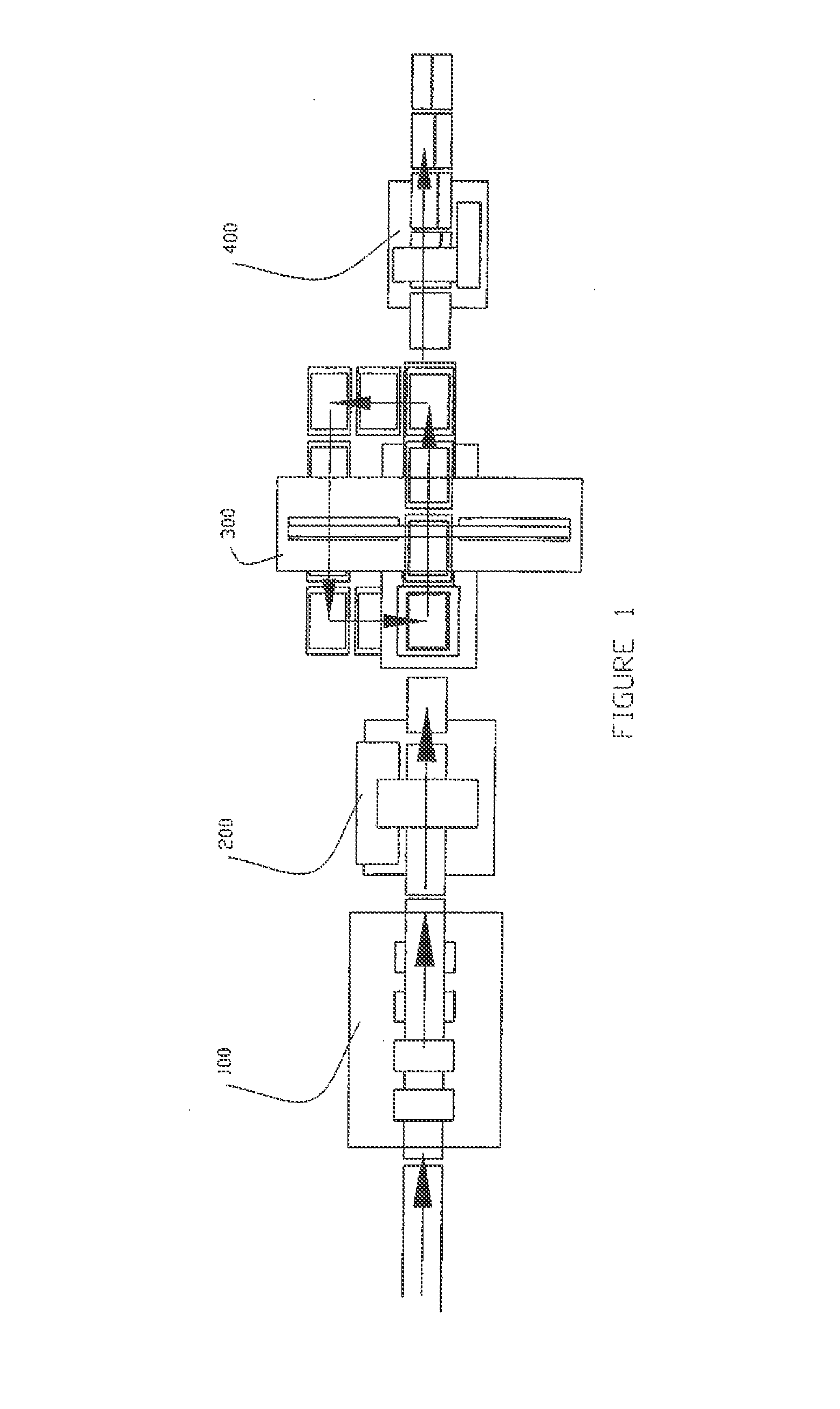Apparatus and method of manufacturing shingles from cellular polyvinyl chloride
a technology of cellular polyvinyl chloride and shingles, which is applied in the direction of roofs, coatings, constructions, etc., can solve the problems of warping, decaying, rot, and shingles made from cedar, and achieves no cracking, peeling or blistering, and minimal fade. , the effect of optimizing performan
- Summary
- Abstract
- Description
- Claims
- Application Information
AI Technical Summary
Benefits of technology
Problems solved by technology
Method used
Image
Examples
Embodiment Construction
[0019]Disclosed herein is a novel, in-line, method for preparing shingles formed from cellular PVC. Utilizing cellular PVC as the basic material for manufacturing the final shingle product produces a finished product free of checks, knots and other defects normally associated with wood shingles. Further, the manufacturing process of the present invention produces shingles that are extremely consistent in taper and squareness while minimizing waste by utilizing at least 98 percent of the raw material during manufacture.
[0020]Referring to FIG. 1, an exemplary method comprises brushing a top face and a bottom face of a cellular PVC board to create a textured pattern on the board via a brushing assembly 100, cutting the board into specified shingle lengths via a cross cut saw assembly 200, parting the cellular PVC board to create profiled boards via a parting saw assembly 300, cutting the profiled cellular PVC boards into conventionally sized shingles via a sizing saw assembly 400, and ...
PUM
| Property | Measurement | Unit |
|---|---|---|
| Length | aaaaa | aaaaa |
| Speed | aaaaa | aaaaa |
| Dimension | aaaaa | aaaaa |
Abstract
Description
Claims
Application Information
 Login to View More
Login to View More - R&D
- Intellectual Property
- Life Sciences
- Materials
- Tech Scout
- Unparalleled Data Quality
- Higher Quality Content
- 60% Fewer Hallucinations
Browse by: Latest US Patents, China's latest patents, Technical Efficacy Thesaurus, Application Domain, Technology Topic, Popular Technical Reports.
© 2025 PatSnap. All rights reserved.Legal|Privacy policy|Modern Slavery Act Transparency Statement|Sitemap|About US| Contact US: help@patsnap.com



